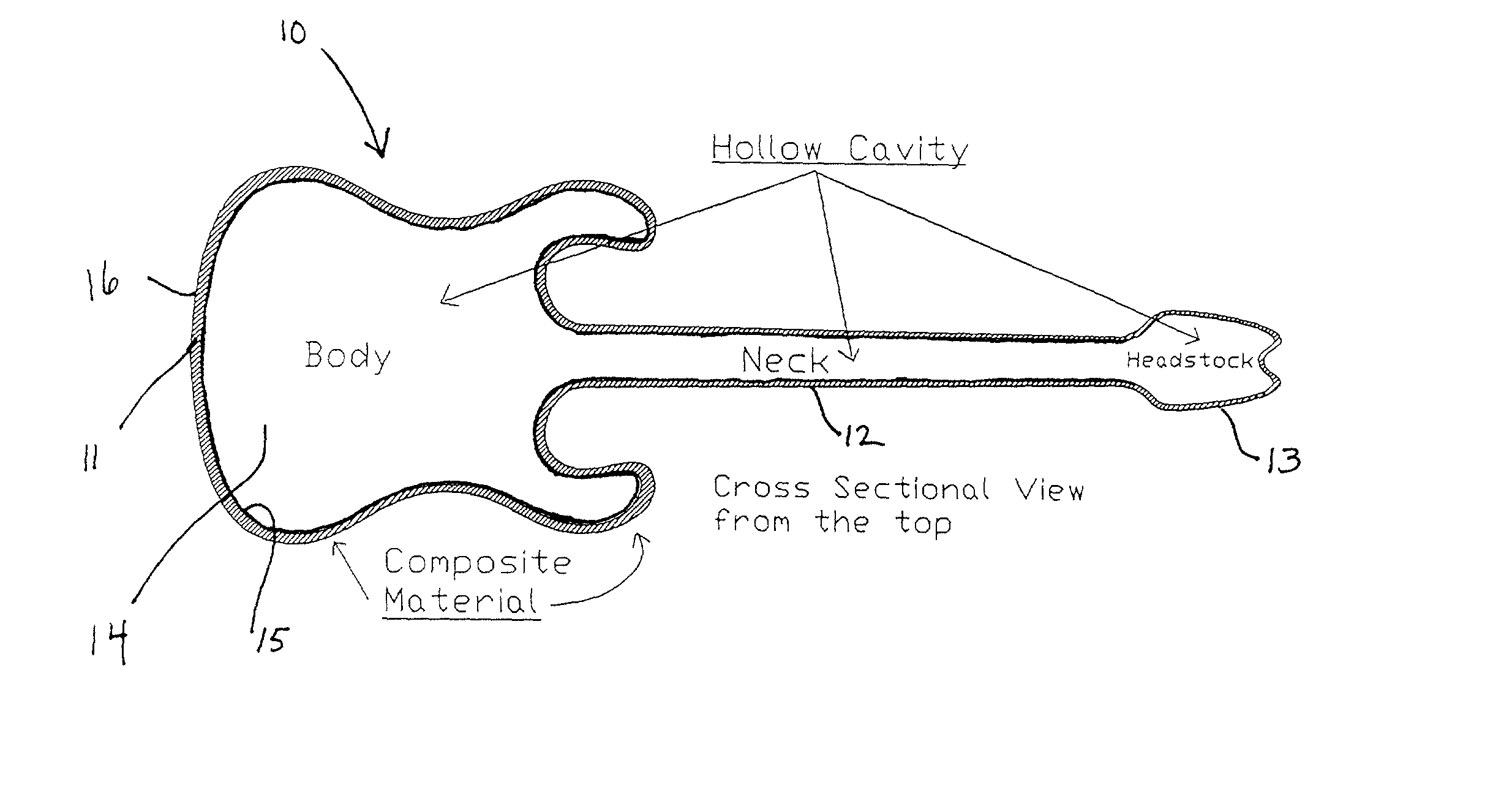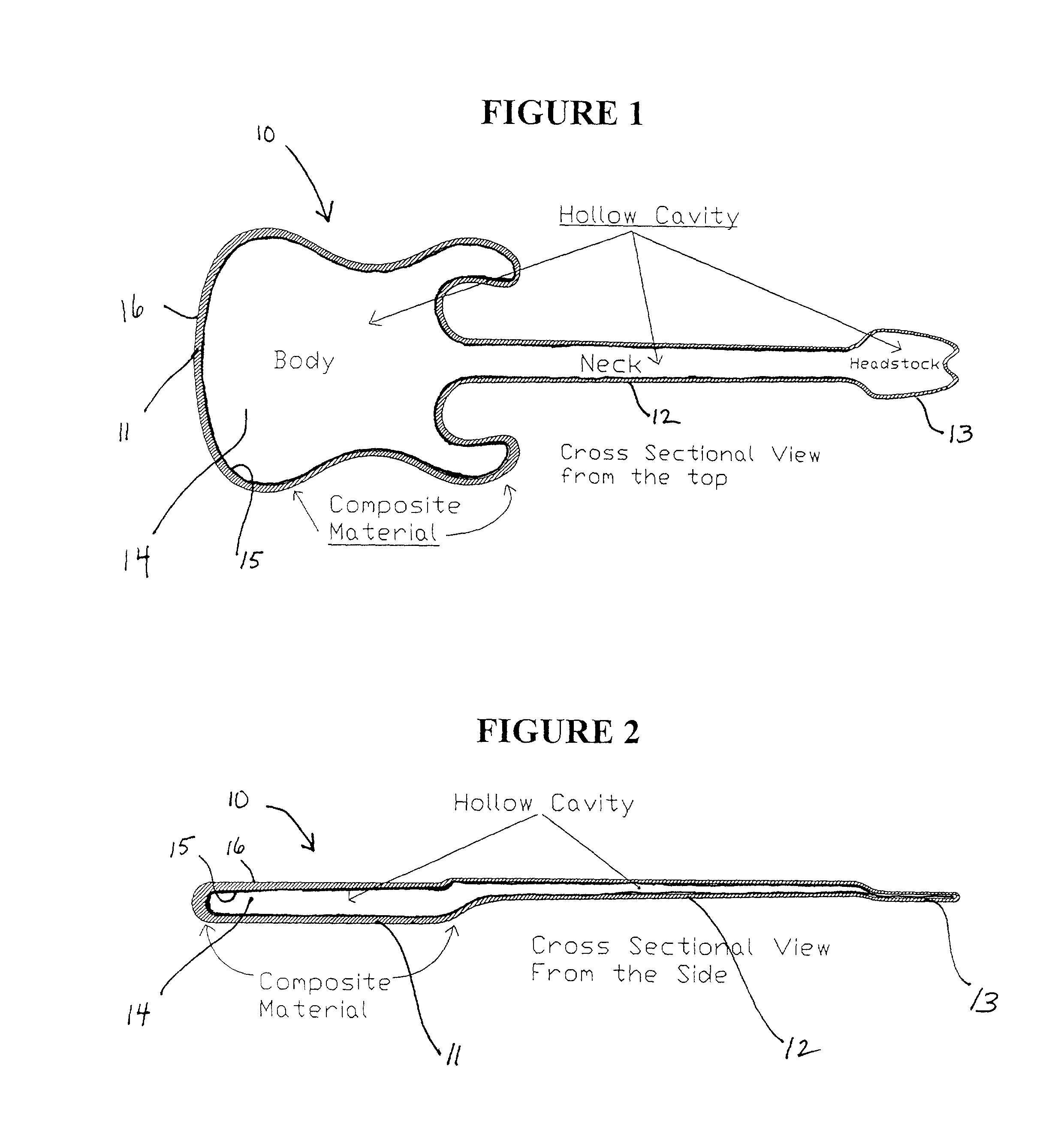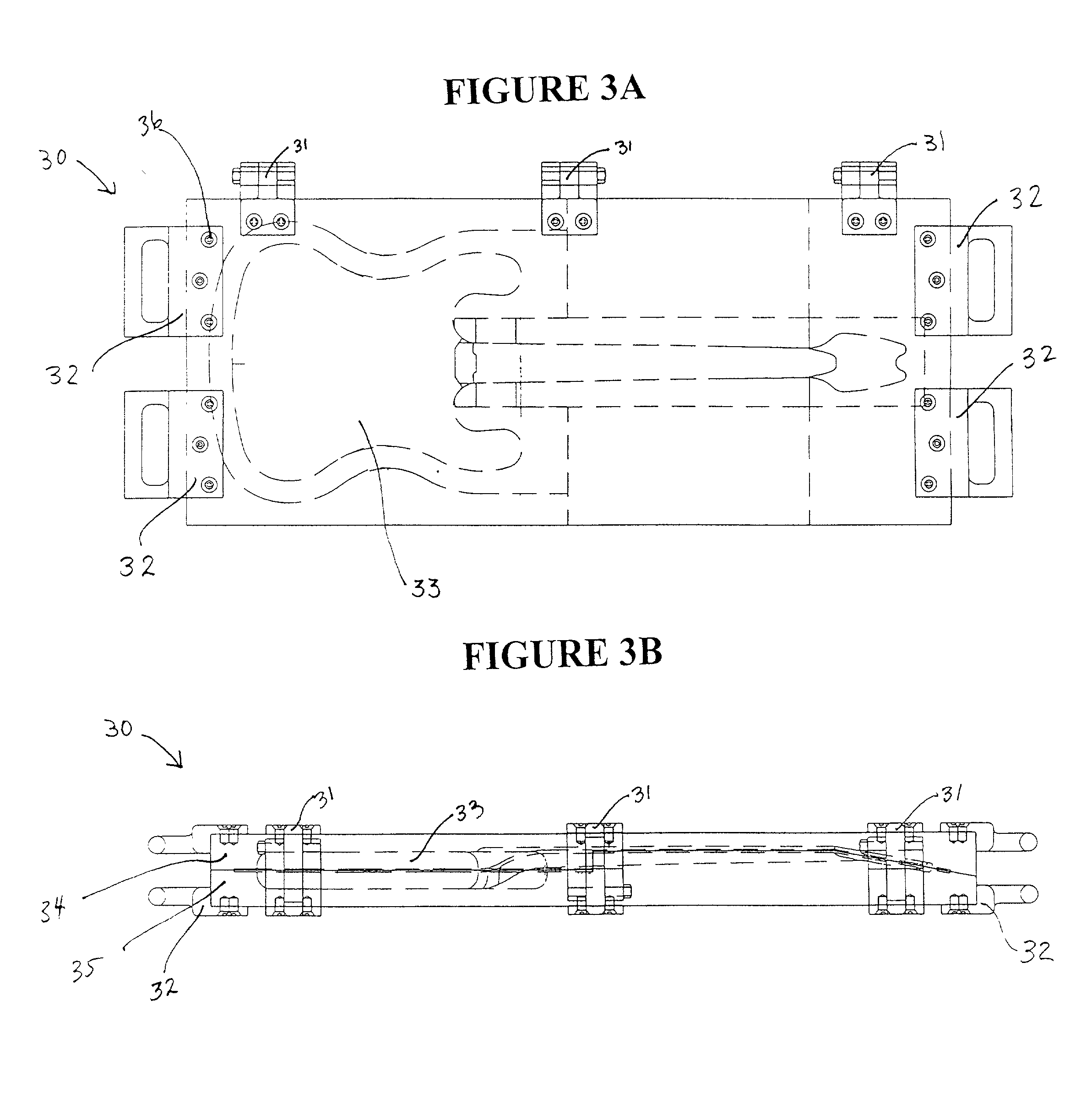Composite stringed musical instrument, and method of making the same
a composite material and stringed instrument technology, applied in the field of composite stringed instruments, can solve the problems of unsatisfactory and unacceptable tone characteristics of synthetic composite materials, unfavorable stringed instruments made from composite materials, and especially the neck of stringed instruments are subject to warping
- Summary
- Abstract
- Description
- Claims
- Application Information
AI Technical Summary
Problems solved by technology
Method used
Image
Examples
example
[0068] A two piece mold set was prepared with a top and a bottom piece, each with a recessed area shaped to be able to mate to form the neck of an electric guitar, said neck shaped so as to have an integral fingerboard. The mold interiors were coated with mold release agent. Graphite fabric (100% Carbon Fabric 3K.times.3K, Part No. 3582-50V, Carbon Composites Co., Paia, Hi.) and fiberglass fabric (11 / 2 ounce fiberglass mat, Diversified Materials Co., La Mesa, Calif.) were cut into suitable shape to fit into the mold top and bottom pieces, with an allowance so that the fabrics could extend about 3.5 cm beyond the edges of the recessed areas. Alternating layers of the graphite fabric and fiberglass fabric were laid into the top and bottom molds in the following order, where G represents a layer of graphite fabric and F represents a layer of fiberglass fabric: G, G, F, F, G, G, F, F, G, G. Epoxy resin (a combination of product #1320 resin with product #3138 hardener; Jeffco Products, S...
PUM
| Property | Measurement | Unit |
|---|---|---|
| thickness | aaaaa | aaaaa |
| sound-damping | aaaaa | aaaaa |
| sound damping | aaaaa | aaaaa |
Abstract
Description
Claims
Application Information
 Login to View More
Login to View More - R&D
- Intellectual Property
- Life Sciences
- Materials
- Tech Scout
- Unparalleled Data Quality
- Higher Quality Content
- 60% Fewer Hallucinations
Browse by: Latest US Patents, China's latest patents, Technical Efficacy Thesaurus, Application Domain, Technology Topic, Popular Technical Reports.
© 2025 PatSnap. All rights reserved.Legal|Privacy policy|Modern Slavery Act Transparency Statement|Sitemap|About US| Contact US: help@patsnap.com



